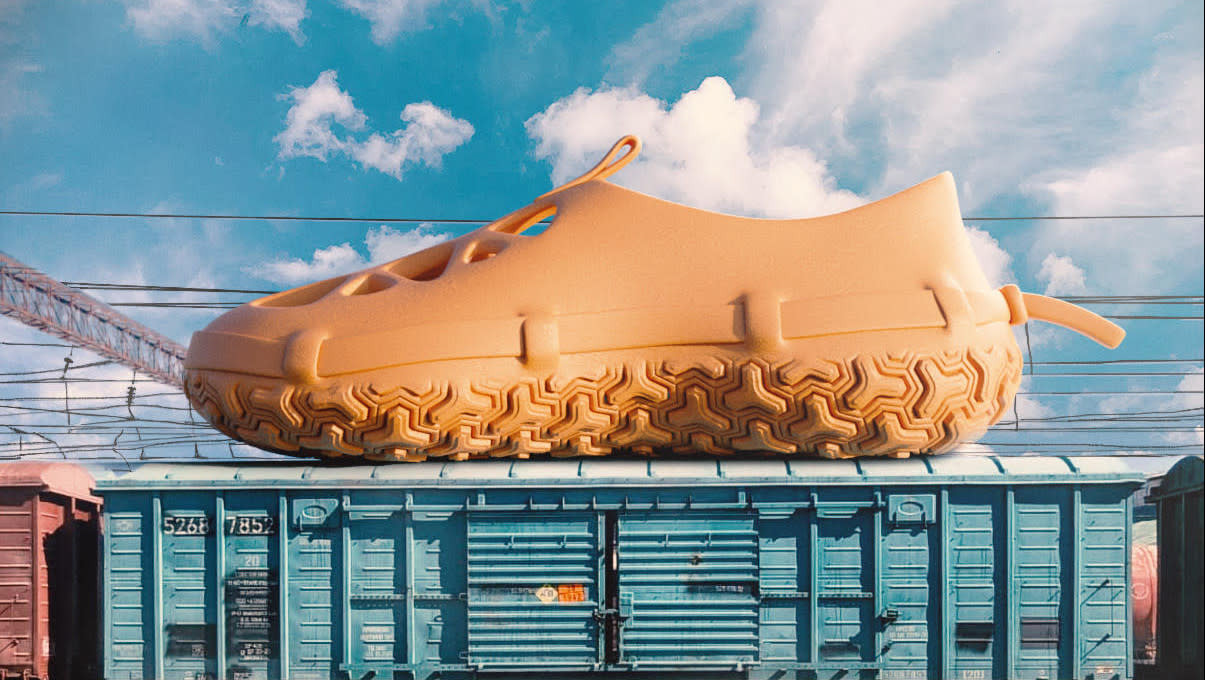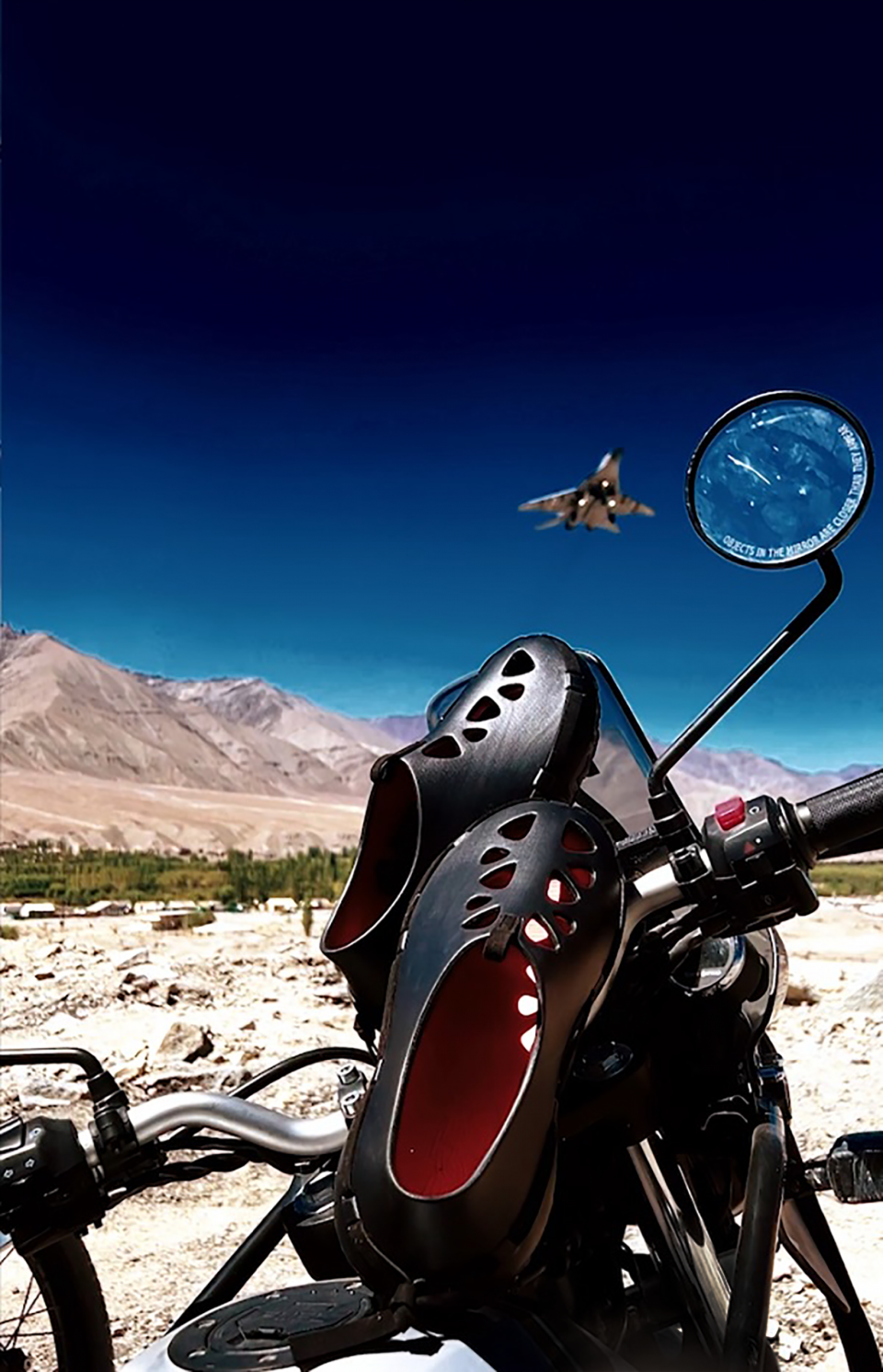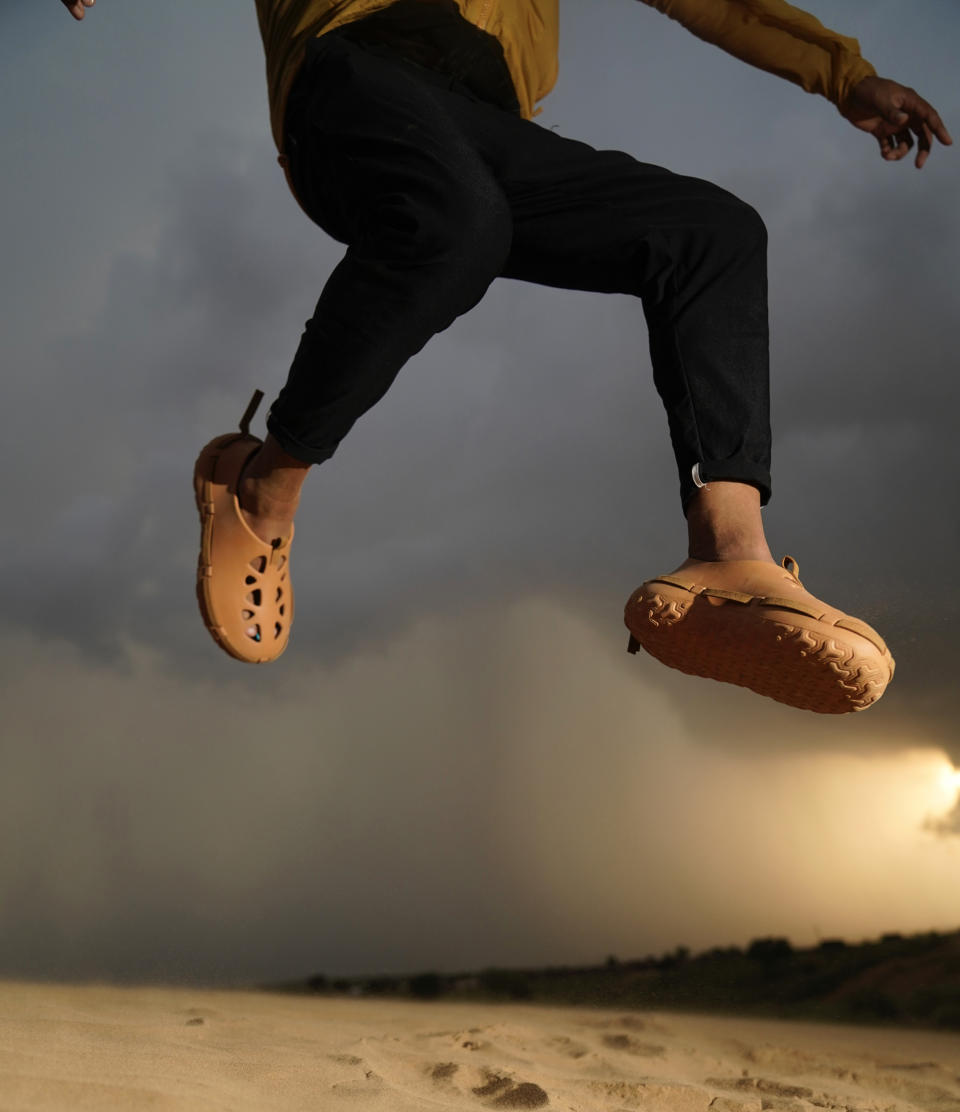Kickin' Facts with Legendary Lade | REVOLT premieres the FCTRY MOCC as Omar Bailey and Abhi Som talk innovation in sneaker design

- Oops!Something went wrong.Please try again later.
What’s up, everybody? It’s your boy Legendary Lade, and as y’all know, I’m all about covering the latest and most interesting sneaker drops. This week, I’m excited to share my conversation with Omar Bailey and Abhi Som, the co-founders of FCTRY LAb, a capital-backed footwear innovation lab and venture studio based in LA. They discussed their latest shoe release, the FCTRY MOCC, its unique imagery, Bailey’s elite sneaker design resume, his time as the head of the Yeezy-Adidas Innovation Lab, and their goals. They also rated the FCTRY MOCC based on “Rate ‘Em’s” grading scale!
Peep the “Kickin’ Facts” premiere and exclusive chat with the dynamic pair below.
Tell us about the FCTRY MOCC shoe and what separates it from everything else on the market.
Omar: It’s modern design-meets-ancient inspiration as we say at FCTRY LAb. My pedigree and background are being in the shoe business for 21 years, coming from a 7-year-old kid sketching and drawing shoes. I always had this passion for wanting to create footwear based on the things that have inspired me, and the things that I’ve been exposed to growing up as a young Black kid born in New York to Caribbean parents in South Florida who did not have access to information about the things that were possible. For me, footwear has been the vehicle that has shown me what is possible in the world. Shoes have taken me around the world and I’ve spent significant time in China, South Korea, and India, where I lived for three years running a shoe factory. After that, Cody, Wyoming, where I worked for Yeezy. So my inspiration has always been what’s around me and what I’ve been exposed to, and this shoe is the latest example of that.
Speak about the imagery for this campaign.
Abhi: We decided to go unconventional in the way that we shot content for the FCTRY MOCC. There is so much traditional product photography that happens in and around LA, but being such an international company, I had some friends of mine — one of them is Sumit Dayal, who has shot TIME Magazine covers. He’s a war photographer and knows nothing about product photography, so we gave him the MOCC and told him to go wild and shoot some dramatic stuff, and they went to rainforests, ancient deserts, and high-altitude areas. I was in Uzbekistan, and we got photos there as well, and then our post-production team also made giant shoes in these dramatic landscapes. Some of the content we got was a MiG-29 plane flying over the MOCC on the India/China border at 17,000 ft. I don’t think anyone has gone to such remote places in the history of modern photography for footwear.

Omar, you were the former head of the Yeezy-Adidas Innovation Lab. Were there any guiding principles or lessons you learned and included in your work at FCTRY LAb?
Omar: When you work for Kanye West, you learn very quickly that anything is possible. I would say that the biggest lesson that I took from my time at Yeezy is that there is no boundary that cannot be challenged or pushed forward when it comes to designing and building products. Also, true experimentation in building footwear and products is how you ultimately learn and discover what is possible. I’ve always said and believe that true innovation starts at the factory level, and that remains true with us and what we’re doing at FCTRY LAb.
Abhi, coming from your background in finance, what made you want to co-found a footwear lab?
Abhi: I’ve known Omar for years before we started this company and I learned a lot from him. I’m from a venture capital/investment banking background, so I understand business, but I’ve always wanted to understand what a sneaker lab is, why it exists, and why only the big companies have them. That made me question and understand that there was a business opportunity here because these types of facilities typically don’t exist independently in the United States, and if you can increase the speed of creating footwear, then you are changing the game in a sense. So I would say my reason for starting this company was my confidence, trust, and friendship with Omar from before we started and more importantly, that there was a business here.
How important is innovation to you vs. the design of the shoe? Do you believe one has to suffer for the other?
Omar: I like to say that we build footwear from the inside out instead of just thinking about aesthetics from the outside in. Comfort and functionality are very important to us and will always be important to people when they wear footwear, especially as we age. It’s about how we can push the boundaries of design while doing it within the guidelines of a shoe that’s actually comfortable and that you can fit and wear. There are lots of examples in the market right now of shoes that look really funky and are interesting but may not be that comfortable to wear. The first thing that people tell us when they put on one of our shoes is that they can feel the functionality inside of it. These are all important factors.

One of your main goals is cutting down production time. Why is that so important to you?
Omar: What we are doing and communicating is that when you control the development process of building/creating a concept and bringing it to life, that ultimately helps you shorten the cycle of production. For a long time, brands used factories for their development, but distance, cultural differences, and the time that happens between the moment you start that first concept to when you give the final thumbs up on the shoe that you want to build and go into the market with can be very long. Being local in LA and being able to do the heavy lifting on the development side of it allows us to solve problems faster and fail faster, if you will. We’re impacting the production time because we’re able to develop the concept much faster.
How important is the pricing and availability of your products?
Abhi: The stage we’re in now is a very exclusive, limited-quantity phase as we grow our audience and community. Our price point is around $140, and the next shoe after this will be more. Our price points are dictated by the kind of shoe it is, and because we are a lab, there is no commonality to our shoes, so it could be anything. As far as availability is concerned, as we slowly grow, we’re going to ramp up the size of our drops but at this point, it’s a very exclusive, limited-drop business model.
Are there any plans to work with retailers? Do you see the FCTRY MOCC being available in stores?
Abhi: We’ve been talking about that because there is substantial retail interest. For us, the question is what kind of retail store we want to be in and how exclusive we want to be. So, yes, there is a lot of interest, but we haven’t figured out exactly who to start with or which shoes to start with.
Omar, you’ve worked with musicians in the past. Are there any artists you want to collaborate with to develop sneakers?
Omar: Various conversations are happening with a few different artists — I can’t say who they are yet, but we have a lot of friends of the brand. A big part of my journey has been working with these big personalities, whether they’re musicians, athletes, or entertainers in some capacity. Conversations are happening with a bunch of individuals — not only musicians but pro athletes, influencers, and lots of people. It’s just about what makes sense for us and how it helps us achieve the goals we’re looking for.
Abhi: Exactly. Omar has built and developed shoes for JAY-Z, Lady Gaga, and Questlove, so there is a historic pedigree. When it comes to collaborating with other artists going forward, it’s a business, tactical, and timing decision.
REVOLT’s “Rate ‘Em’” assesses sneakers on a scale of 1 to 5 based on the following categories: Quality, design, desirability/hype, originality, and story. How would you rate the FCTRY MOCC?
Abhi: For quality, I’ll give it a 4.9 because of the thickness of the EVA foam on the MOCC. Also, there’s a video on our IG of the shoe being run over by a car, and it just pops back up with no scars, and with a wipe, it’s clean again. That speaks to its quality.
For design, I’ll give it a 5 because it’s unique. How many people do you know who brought a product to market that is influenced by Native American and Indian traditions, and made by a Black man from the Bronx who lived and ran a factory in India, and got inspiration from those cultures, and then combined it with threads of moccasins, and put shoes together? It’s unique and not on the market.
In terms of desirability/hype, we blew up on Hypebeast and we’ve been covered by all the big media outlets, so there’s a lot of buzz around FCTRY LAb. We also sold out our first drop, so we get a full-blown 5.
For originality, I’ll club it with my answer on design because it’s unique in terms of being inspired by two ancient cultures, so I’ll also give it a 5.
Lastly, for story, how many other campaigns do you know where MiG-29 planes are flying over a shoe on a 17,000-foot-high border between India and China? Also, giant shoes were shot in Uzbekistan over Soviet-era trains. This is pretty radical stuff in terms of our content, so I’ll give it a 5 here as well.
Omar: I’ll start by saying first of all, making shoes is hard. I’ve been in this business 21 years and understanding the nuisances, and the engineering, and the development, and really being able to combine that with this creative aesthetic drive that I have, and finding my footing, and being able to translate that into building shoes, and spending that extended period of my whole career perfecting it was tough. I’ve failed more times than I’ve succeeded and being able to make it to this point now using all of those failures and successes, and pouring that into the shoes that I’m now able to create through FCTRY LAb and put out into the market, I think all of those things in some way, shape, or form tie back into all of those different attributes that you talked about from quality, design, desirability/hype, originality, and story. So yeah, I’m going to be bias and give it 5s across the board.
Where do you see FCTRY LAb in the next five years?
Omar: One thing that stands out for me is building this company to a place where it can become a platform for young creators. A place where young creators can come and be able to have access to a tool that they normally wouldn’t have access to. I think about my time as a kid — if I knew there was a facility when I was a 7-year-old, or even as a young student in college, to know that something like this existed and that there was a possibility to be able to work with them or see my vision come to life. There’s nothing better than imagining something in your head and then actually being able to see it in front of you. For me, it’s about, as this company continues to grow, as we believe and know it will, how can we continue to use our platform to help those young creators who have dreams and aspirations to be the next Jerry Lorenzo, or the next Virgil, or even the next Omar Bailey, if you will. There are probably five other things on my mind, but that one stands out.
That’s a great way to look at it.
The FCTRY MOCC will be released in two colorways on Oct. 11 for $140 exclusively at fctrylab.com.
Trending Stories

